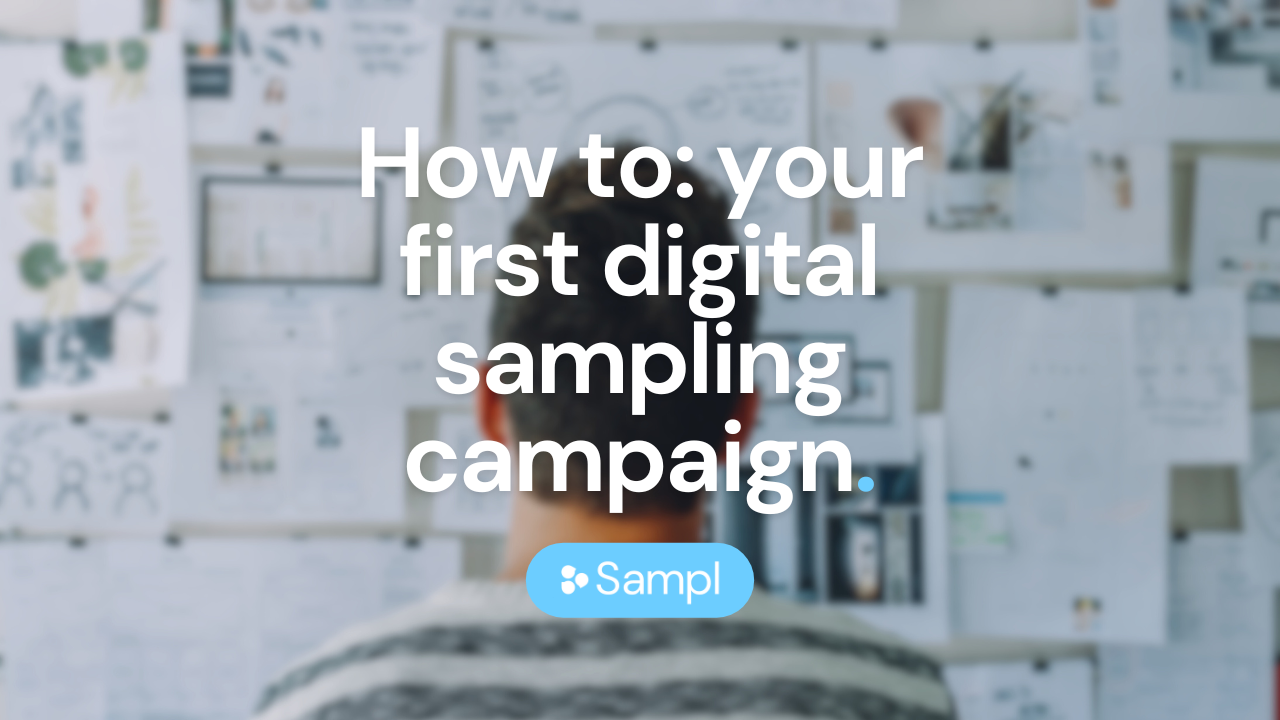
Most marketers know that giving people the chance to try a product through a sampling campaign can be highly effective.
The sampling landscape changed considerably in 2020. With traditional sampling methods proving difficult or impossible to carry out and new mechanics emerging, here are some of the key things to consider when planning a successful sampling campaign.
Set SMART objectives
In the early days of product sampling clients didn’t have objectives much past needing to sample X products by Y date. Thankfully things have progressed since then and with the improvements in measurability, there’s a lot more that your brand can aim to achieve and track.
Like a lot of things in life, it’s good to start with the desired result and work backwards. Why are you doing the campaign and what are you trying to achieve with it? What does it need to show to be deemed a success? Brand awareness and trial are givens, and in any case, unless you’re doing a large scale campaign, it’s going to be difficult to quantify the impact in these areas.
Objectives will vary but they should always be Specific, Measurable, Achievable, Realistic and Timebound (SMART).
Relate them to areas that will make a difference and help you assess whether the campaign has delivered on what it needed to be successful – whether that’s impacting on sales, driving reviews, creating UGC, or something as simple as impacting on the desired audience.
Reach the right audience
When planning your sampling campaign, the first thing to think about is how you can ensure your samples are going to reach relevant consumers.
Speak to your sampling agency about the targeting and segmentation options that can be applied with your campaign, and how these options can be used to ensure the people receiving and trying your product are right for your brand.
What are the specific traits that you are looking for? This could be demographic, attitudinal or behavioural. Cross-referencing your existing ‘best customers’ will often help you to identify the traits and characteristics that you need to find in the people you’ll be reaching, to give you the best chance of success.
Also consider whether any additional measures can be taken to ensure your samples are reaching people likely to desire your product, and how practical these are – for example if there is an ‘opt-in’ process.
Deliver experiences that inspire action
You want to give the best impression of your brand to those who are experiencing it for the first time. How can you grab their attention and deliver an experience that does your product justice?
Consider where and how your samples will be delivered to consumers. How does the process fit with your brand? And does the sampling occasion created align with when and how your product is best used, putting it front and centre in the recipient’s mind?
Building on that, it can be difficult to tell the whole story with just the product. Think about the options to include further messaging, for example via the packaging, a leaflet/coupon or any opportunities for personalised digital engagement to drive people towards your desired outcomes. For example, if one of your objectives is sales related, you’ll need to provide information about where and how to purchase clearly and compellingly.
When planning the experience think about how much of the occasion focuses on your product. How can you use this attention to get the person trying your product to do the things you need them to do for the campaign to be a success?
Measure & learn
Knowing if campaigns are successful requires the ability to measure their impact. Planning your success criteria and working backwards will make this easier, but it is vital to consider the measurement tools available and the level of transparency you have.
Here are some examples of how to measure common objectives:
| Objective | Measurement options |
|---|---|
| Impacting your desired audience |
|
| Generating reviews |
|
| Driving sales |
|
When planning your campaigns, consider how easily you will be able to measure what matters, and how the information is provided to you.
Is it easily obtainable and what do you need to do to access it?
How can you compare your results to benchmarks, to understand relative performance?
What opportunities do you have to learn from the campaign, to help you improve longer-term?
Consider the opportunities for added value
Sampling provides a huge opportunity for building on the understanding that you have of your audience and how they perceive your products.
A growing number of sampling mechanics incorporate a survey element into the interaction to allow you to capture feedback directly and to uncover actionable insights that will help you towards your longer-term goals. Consider the burning questions you have or the things you’re trying to prove or disprove to your stakeholders. A few thousand responses from people who have tried your product can provide very robust insights and can help you make better decisions.
Depending on where your products are sold, online reviews are proving ever-more valuable with an increasing share of shopping happening online and people looking for peer opinions of products. How many times have reviews helped you decide whether or not to purchase a product? If you’re launching a new product then being able to generate good quality reviews will help, so consider how sampling campaigns can be used to get a head start.
Many brands are working to improve their first-party data positions and to enhance the data that they already hold. Changes to privacy laws and the impending death of the third-party cookie will make online advertising more difficult, and the brands lacking in first-party data will be at even more of a disadvantage than they are today. People trying your products and enjoying them are the kind of people you want on your database, right? Think about how your sampling campaign can help you capture more of them.
There are many things to consider when planning your sampling campaigns and choosing between the different options available, but if you focus on these 5 steps you’ll be on the right track.
If you’d like to learn more about how we can help you achieve sampling success, call us today on +44 (0) 203 974 7458 or drop us a line at sayhello@samplmarketing.com.


